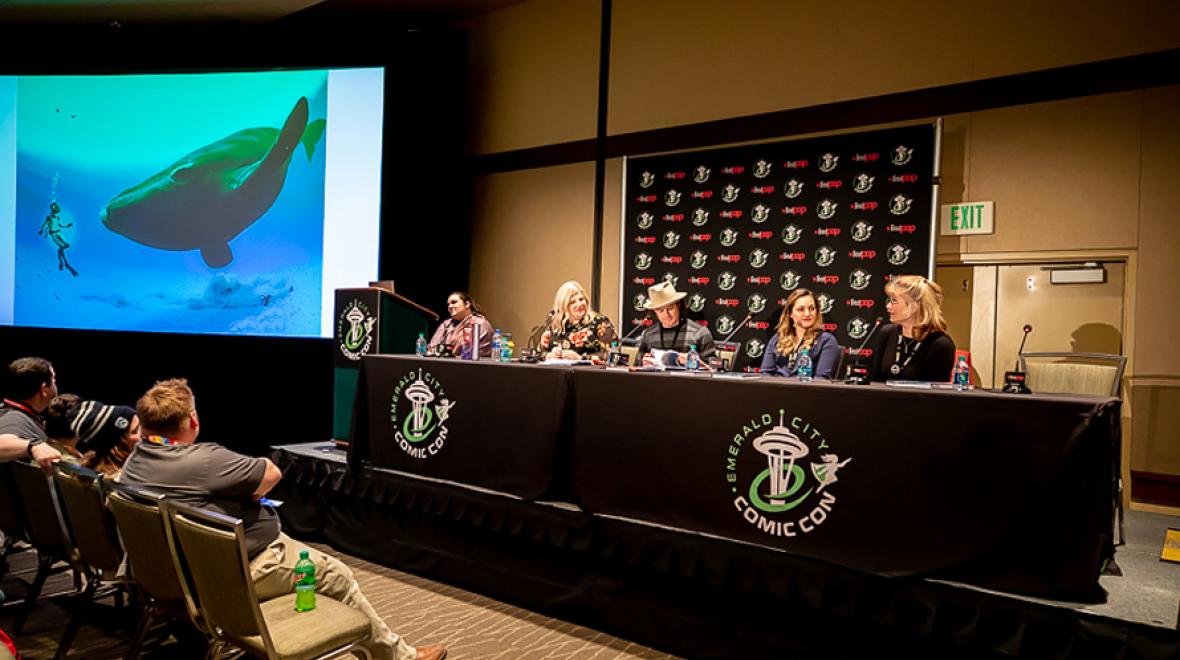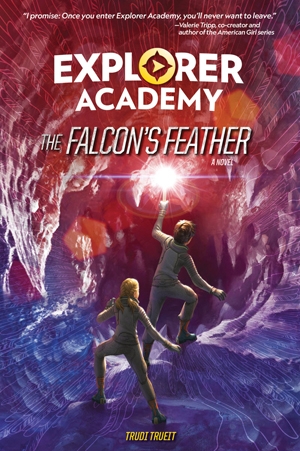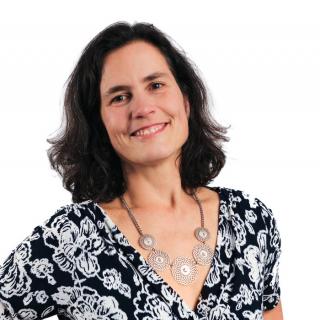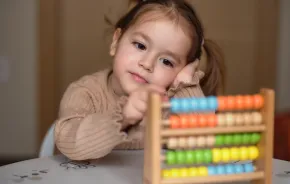
Photo:
"Explorer Academy" series author Trudi Trueit (seated far right) joins National Geographic Explorers Aaron Huey and Erika Bergman, and Nat Geo Kids Editorial Director Becky Baines for a conversation about the compelling scientific discoveries and incredible innovations that inspired the Explorer Academy fiction series at Emerald City Comic Con, March 17, 2019.
Cruz Coronado is like many 12-year-old boys — well, except for a few small differences. Instead of attending a regular middle school, for example, he attends the elite Explorer Academy, where he studies disciplines such as codebreaking, world geography and survival training in order to become a world-class explorer. He has a honeybee-shaped microdrone named Mell to help him perform daily tasks (and occasionally rescue him). And he’s using his explorer skills to solve the mysterious death of his scientist mother, who had been working on a secret project that a certain pharmaceutical company may have found very threatening.
 Cruz has reason to believe her death was not accidental, which is why he and his best friends Sailor, Emmett and Lani — with the help of clues his mother left behind — are out to find the truth.
Cruz has reason to believe her death was not accidental, which is why he and his best friends Sailor, Emmett and Lani — with the help of clues his mother left behind — are out to find the truth.
Welcome to the techno-science-cool world of “Explorer Academy,” a seven-book series aimed at middle-grade readers that is National Geographic Kids’ first major foray into fiction.
“No pressure, though!” laughs series author Trudi Trueit, who was up for the challenge of writing a series that would satisfy both the rigorous expectations for a National Geographic publication and a tween audience’s thirst for adventure. The result is an unusual hybrid of science and science fiction that keeps young readers turning pages while learning about inventions that are just a shade or two beyond what’s available now.
In the first book, “The Nebula Secret,” published last fall, Cruz first enters the Academy and begins to unravel the mystery of what happened to his mother, risking his life to find the first of seven clues (get it — seven books, seven clues?). In the just-released second book, “The Falcon’s Feather,” Cruz and his classmates travel north on the good ship Orion, a maritime adventure complete with submarine dives and an exciting whale rescue. The books include full-color illustrations, as well as maps and codes.
Trueit is an Everett-based writer who began her career as a TV weather reporter in Spokane. An experienced author of middle-grade nonfiction, she was tapped by National Geographic to write the “Explorer” series, which is releasing a new book every six months. She is doing a book tour with National Geographic explorers such as Erika Bergman, who is a submarine pilot and filmmaker featured in a “truth behind the fiction” section at the end of “The Falcon’s Feather.” The first event took place at Emerald City Comic Con in mid-March. Trueit took a few minutes to speak with ParentMap about the new book and the series in general.
You say the “Explorer Academy” series is set in the near future. What does that mean?
I always say [the books] are set about 50 years into the future. But they’re based on real science. And every time I came up with something, I would do a little research on it and then I would discover that National Geographic explorers or other scientists were already doing something very similar to what I thought I had created myself. [For example], I’d think, okay, I’m going to do this tiny microdrone. Well, guess what? They’re already doing that. Another National Geographic explorer with whom I had done a little bit of work is based in Seattle. Her name is Gemina Garland-Lewis, and she works with the Center for One Health Research [at the University of Washington], studying the connection between diseases in humans and animals, [looking at ] how we pass the diseases to animals as well as how they pass them to us. This will be in an upcoming book.
While researching the series, you interviewed actual National Geographic explorers, such as Erika Bergman. How did they help inform the books?
Most of the explorers I talked with or read about really found their passion as children. Maybe they went on nature hikes with their parents, or they had an interest in dinosaurs or snakes. The other thing about the explorers was that even though they are adventurous, they really do what they do because they want to contribute to the world; they want to make a difference. And so those are the two things that I thought about as I started outlining the series, and what I wanted Cruz, the main character, and his friends to do as well.
Some kids might see a parallel between the Explorer Academy and Hogwarts, but I know that you see a big distinction. Can you talk about that?
I really wanted this to be something that was futuristic but real. There are certainly some things that may go slightly beyond what we [can do now], but what was really key to me was to be able to say, “This isn’t magic. This is real. You can do this. You can contribute to the world. You can be an explorer. You can travel around and collect snake venom if you want. You can go to the top of Mount Rainier and study butterflies. The world, the planet, is in your hands.”
What’s the coolest thing the kids do in the second book?
In the second book … [the kids at the Explorer Academy] are going to do some work in Norway and Iceland, and then they’re called to help some whales that are caught in fishing nets. Cruz gets the opportunity to talk with a whale. I won’t tell you how he does it, but he does. So that was great fun to write.
How do you think adventure books such as this series can get kids excited about science?
I’m a writer and a storyteller. For me, science was always a little dry and boring. This gave me the opportunity to write the kind of adventure I would want to go on if I were that age and at the same time learn about science in a fun and exciting way. So, it’s not just hammering them over the head with a message of science — they’re actually using science to solve some problems, too.
Any tips for parents who want to make science more accessible and adventurous for their kids?
Expose your kids to as many different things as you can. Go for nature hikes, go biking, go hiking, go mountain climbing, go to the ocean and explore the beach — do all those things. And somewhere along the line, something will trigger in their mind. The more that you expose them to all of the different opportunities that are out there, [the more likely it will be that they] find their passion and go, “Wow, I might want to go into marine biology or be an oceanographer or a pilot in a submersible.”
Cool resources for would-be explorersIn addition to reading the “Explorer Academy” series, kids can connect to the ideas and adventures in the books in many other ways, from online videos and games to rigorous camps that Erika Bergman runs in her “spare” time. Here’s a list. Explorer Academy website: This National Geographic website includes excerpts from the books; videos and information about gadgets, from microdrones to wearable computers; and code-breaking games. You can also order the books and an activity book that will be released in May 2019. Girls underwater robot camps: Yes, you read that right. Erika Bergman, a submarine pilot and National Geographic explorer who is traveling on the “Explorer Academy” book tour, started a network of underwater robot camps for girls that exposes campers to submersible science and gives them rigorous training and an immersive experience. Classrooms Under the Sea videos: Erika Bergman has been streaming a number of her submarine dives on YouTube, from a shark dive in Hawaii to a deep reef dive in Roatán. Subscribe to her channel to get a look. |











